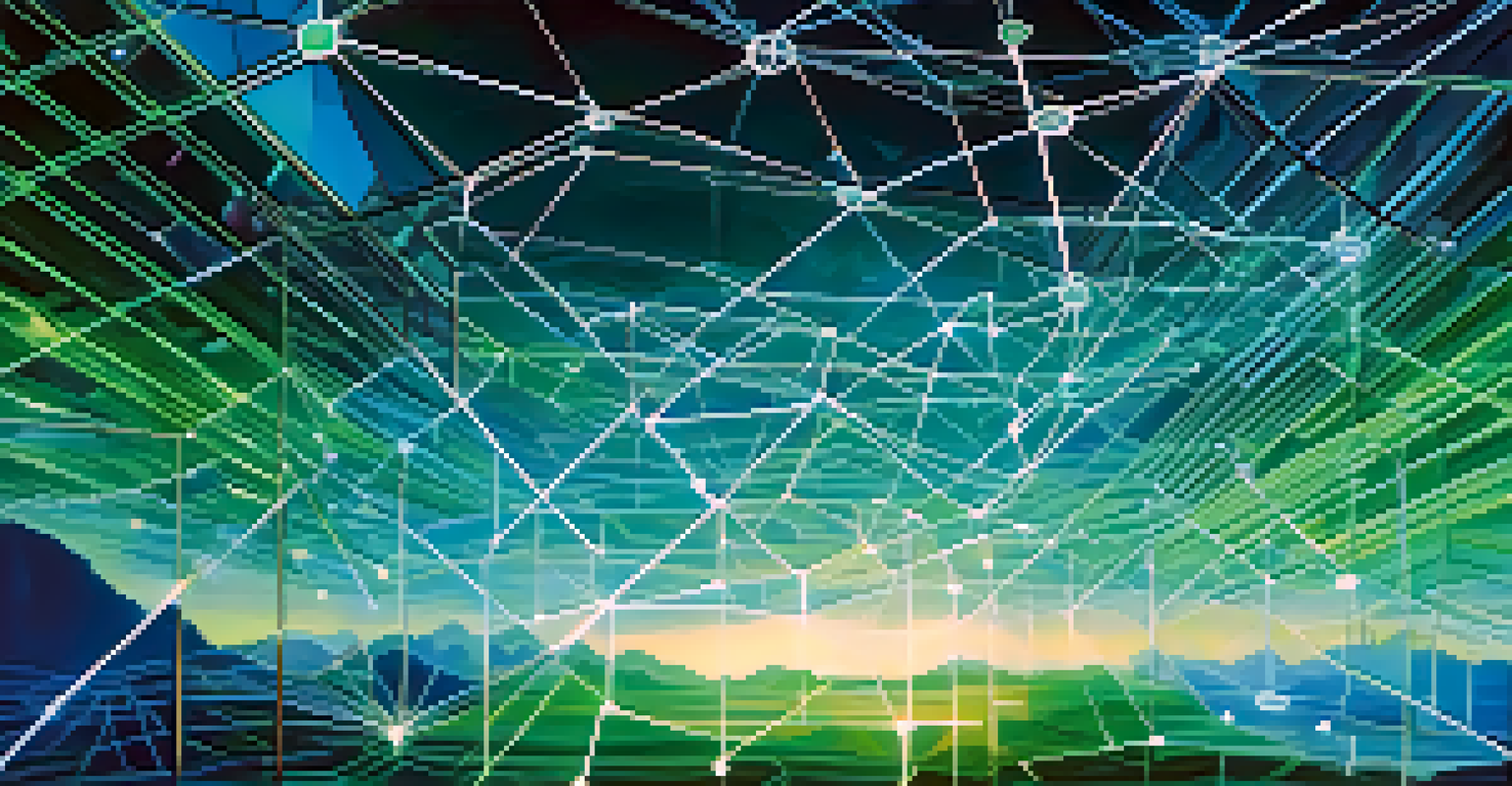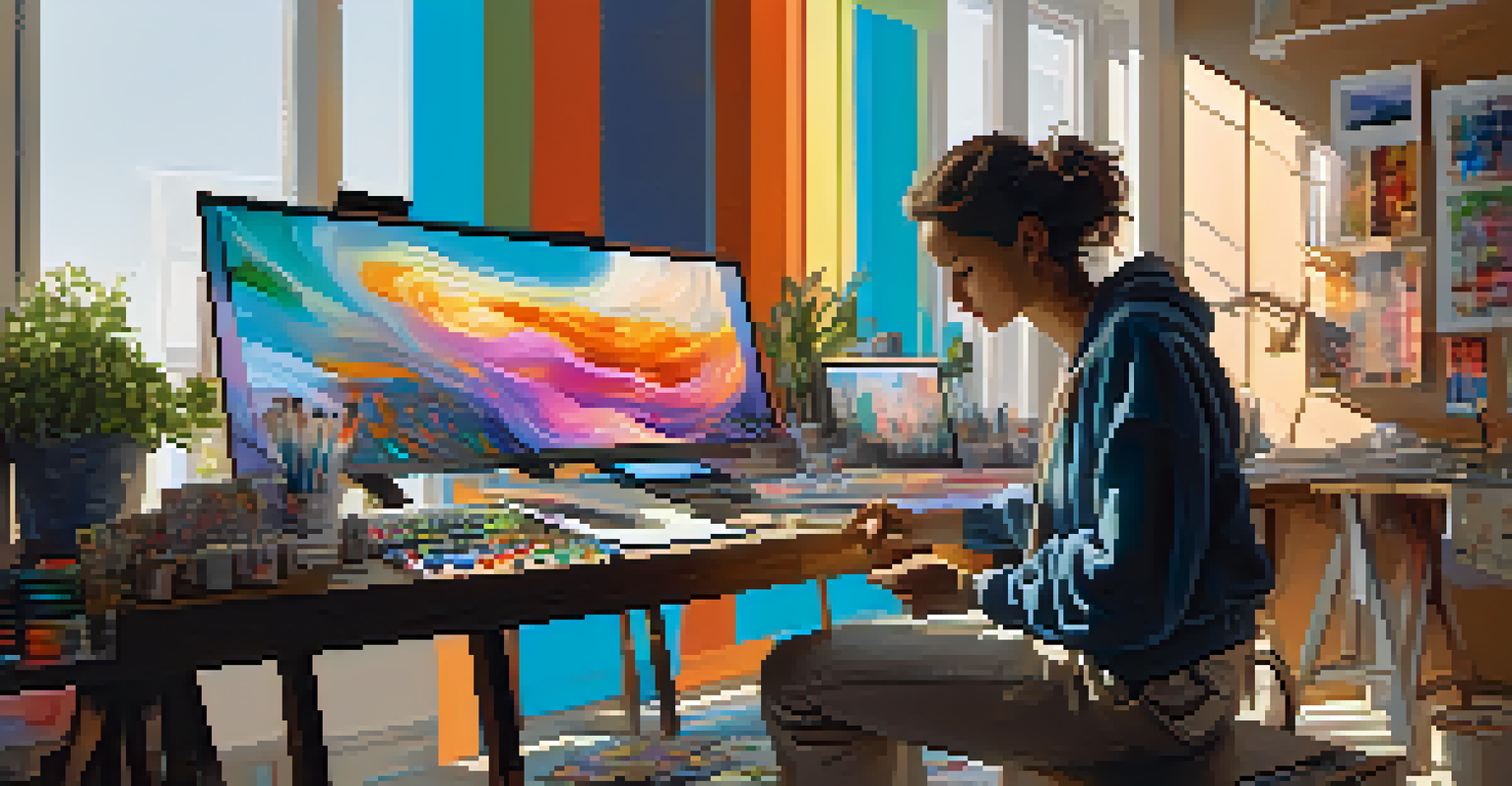NFTs as Proof of Ownership: Implications for Digital Rights

Understanding NFTs: The Digital Ownership Revolution
Non-fungible tokens (NFTs) are unique digital assets that represent ownership of a specific item or piece of content on the blockchain. Unlike cryptocurrencies, which are interchangeable, each NFT has distinct properties that set it apart. This uniqueness allows artists, musicians, and creators to tokenize their work, providing a way to establish ownership in the digital realm.
NFTs are a new and exciting way to own and trade digital assets, breathing life into the concept of ownership in the digital age.
The rise of NFTs has sparked a significant shift in how we perceive ownership. Traditionally, owning a digital file meant having a copy, but with NFTs, owning an original version becomes possible. This concept not only revolutionizes the art world but also extends to music, gaming, and even virtual real estate.
As we navigate this new landscape, it's essential to understand that ownership via NFTs is not just about possession; it's about proving authenticity and provenance. This new form of ownership challenges existing notions of copyright and intellectual property, paving the way for a more equitable digital economy.
How NFTs Provide Proof of Ownership and Authenticity
NFTs serve as a digital certificate of authenticity, verifying that a specific digital item is the original. Each token is stored on a blockchain, which acts as a public ledger, making it impossible to alter or counterfeit ownership records. This reliability fosters trust among buyers and sellers in a market often plagued by piracy and unauthorized reproductions.

When an artist mints an NFT, they can embed important information, such as the creation date and ownership history, directly into the token. This transparency not only validates the creator's rights but also enhances the value of the NFT itself. Buyers know they are investing in something genuine, which can lead to higher prices and a more robust secondary market.
NFTs Redefine Digital Ownership
NFTs allow for true ownership of digital assets, enabling creators to establish authenticity and provenance.
Furthermore, NFTs can include smart contracts, which are self-executing agreements with the terms directly written into code. This means that artists can automatically receive royalties each time their NFT is sold, ensuring continuous compensation for their work. Such features highlight how NFTs redefine ownership and authenticity in digital assets.
Implications for Digital Rights Management
The emergence of NFTs introduces new dynamics in digital rights management, challenging traditional frameworks. As digital ownership becomes more decentralized, creators gain more control over their work, allowing them to set terms for use and distribution. This empowerment can lead to a more equitable ecosystem for artists and creators, enabling them to profit directly from their creations.
The power of NFTs lies in their ability to provide authenticity and ownership in a world where digital copies are easily made.
However, this shift also raises questions about the enforcement of rights. With the ease of copying digital files, ensuring that NFTs are not misused remains a challenge. NFT marketplaces and platforms will need to implement robust policies to protect creators and uphold their rights, requiring collaboration between artists, developers, and legal experts.
Moreover, as NFTs gain traction, regulatory bodies will likely step in to establish guidelines for digital ownership and copyright. This could lead to a more structured environment that balances the needs of creators with the interests of consumers, fostering sustainable growth in the NFT market.
Challenges and Risks Associated with NFTs
Despite the potential benefits, NFTs come with their own set of challenges and risks. One major concern is the environmental impact of blockchain technology, particularly proof-of-work systems that require significant energy consumption. As awareness of climate change grows, creators and consumers alike are reevaluating the sustainability of NFTs.
Additionally, the market for NFTs can be volatile and speculative. Prices can skyrocket, but they can also plummet just as quickly, leading to potential financial losses for investors. This unpredictability may deter some creators from entering the space and can create a sense of uncertainty around digital ownership.
Community Drives NFT Success
The strength of communities fosters collaboration and support, enhancing the value of NFT projects through engagement.
Finally, the legal landscape surrounding NFTs is still evolving. Issues like copyright infringement, ownership disputes, and the classification of NFTs as securities present hurdles that could impact their future viability. Navigating these complexities will be crucial for stakeholders involved in the NFT ecosystem.
The Role of Community in the NFT Ecosystem
Community plays a vital role in the success of NFTs, as it fosters collaboration and support among creators and collectors. Many NFT projects thrive on the strength of their communities, which can drive demand and establish value. Social media platforms, Discord channels, and online forums provide spaces for enthusiasts to connect, share ideas, and promote their favorite projects.
Moreover, community engagement can lead to innovative collaborations, where artists join forces to create unique NFT collections. This not only enhances visibility for individual creators but also enriches the overall NFT landscape. As more people participate in these communities, the potential for creativity and collaboration expands exponentially.
Additionally, community-driven initiatives often focus on inclusivity and diversity, allowing underrepresented voices to shine in the NFT space. By prioritizing collaboration and support, the NFT ecosystem can cultivate a more equitable environment that benefits all participants, from artists to collectors.
Future Trends in NFTs and Digital Ownership
As technology continues to evolve, the future of NFTs looks promising. We can expect to see advancements in blockchain technology that enhance efficiency and reduce environmental impact. These innovations may attract more creators and consumers to the NFT space, driving further adoption and acceptance of digital ownership.
Additionally, the integration of augmented reality (AR) and virtual reality (VR) with NFTs has the potential to create immersive experiences for collectors. Imagine owning a digital art piece that you can display in a virtual gallery or interact with in a digital environment. Such applications could redefine how we engage with art and collectibles in the digital age.
NFTs Face Environmental Challenges
Concerns about the environmental impact of blockchain technology highlight the need for sustainable practices in the NFT space.
Furthermore, as more industries explore the potential of NFTs, we may see new use cases emerge beyond art and gaming. From real estate to fashion, the possibilities are vast. As digital ownership becomes more mainstream, understanding the implications for rights and ownership will be crucial for creators and consumers alike.
Conclusion: Embracing the NFT Revolution
In conclusion, NFTs are transforming the concept of ownership in the digital world, offering new opportunities for creators and consumers. As proof of ownership, they provide a reliable and transparent way to establish authenticity and provenance. However, navigating this evolving landscape comes with challenges that require ongoing dialogue and collaboration.
The implications for digital rights are profound, as NFTs empower creators and challenge traditional frameworks. By understanding the risks and embracing the community-driven nature of the NFT ecosystem, we can foster a more inclusive and equitable environment for all participants.

Ultimately, as we embrace the NFT revolution, it's essential to remain informed and engaged with the changes it brings. By doing so, we can contribute to a digital landscape that values creativity, authenticity, and ownership in ways we've never seen before.